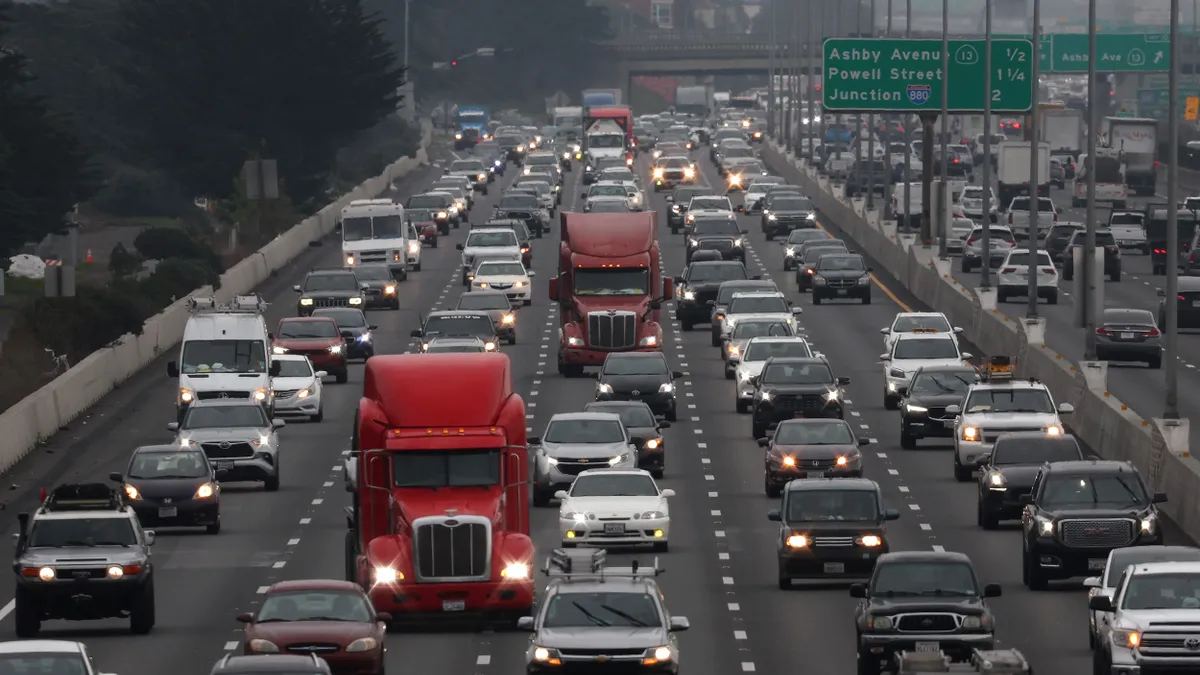The world's largest consumer electronics show, CES, has embraced a fitting framework this year with its first-ever all-digital event due to the COVID-19 pandemic.
While the grandeur of the online conference pales in comparison to the show's traditional Las Vegas set-up, industry executives are just as eager to showcase their products — with many touting their new automotive innovations in Monday press conferences.
Vehicle technology is just one of six key trends the Consumer Technology Association (CTA), which runs CES, highlighted in its list of 2021 trends to watch. Such technologies include cellular vehicle-to-everything (C-V2X) features, mobility-as-a-service (MaaS), autonomous vehicles (AVs) and electrification — all of which were showcased by original equipment manufacturers (OEMs) and automakers on Monday.
Many of these technologies will be driven by the advancement in 5G networks, said Steve Koenig, vice president of research at CTA, during the 2021 trends session.
"We're overlaying 5G in smart cities and it'll be very interesting to see, as those networks deploy, how that will take shape. Will it be vehicle-to-vehicle first? Will it be vehicle-to-infrastructure or smart cities things?" said Koenig, noting that 5G networks will "serve as a framework for the 21st century."
Smart Cities Dive checked in on a number of OEMs and leaders in the mobility space to assess which automotive technologies could make waves in 2021.
Panasonic
Panasonic said it is helping to "define the user experience for the future of transportation" in its Monday press conference, pointing to new innovations such as its augmented reality Head Up Display (HUD) that projects holographic dashboard images to a driver's windshield. The HUD system is intended to reduce driver distraction and increase road safety through eye-tracking technology, a 3D imaging radar and vibration control, among other features.
Mobileye
Intel-backed Mobileye teased on Monday that it is set up to "win globally in the AV industry." The company said it will expand its AV test fleets in Detroit, Tokyo, Shanghai, Paris and New York — pending regulation — in early 2021, with enhanced radio- and light-based detection-and-ranging sensing capabilities.
Mobileye CEO Amnon Shashua said the company's crowdsourced mapping technology, which has mapped 1 billion kilometers to date, can support Mobileye's scalable benefits globally without the need to deploy specialized engineers to new locations. With such technology, Mobileye can send vehicles to local teams that can launch the AVs following appropriate training safety.
HERE Technologies
HERE Technologies on Monday announced the launch of its customizable EV Routing platform, which aims to optimize private and commercial vehicle routing with account to vehicle charging times. The offering is intended to get EVs "from A to B while minimizing the number of charging stops and optimizing battery charging times," the company said in a press release.
HERE also introduced its new, private mapping-as-a-service offering, which will enable enterprises to bring their mapping data to the HERE platform to build and maintain map datasets. This mapping can then be used for advanced analytics and services, giving customers a competitive edge in the market.
Bosch
Bosch took a unique approach in its press conference by shifting viewers' attention from product to impact — particularly climate and sustainability. Bosch said it is the first automotive supplier in the world to join the Science Based Targets initiative with a goal of cutting upstream and downstream CO2 emissions by 15% by 2030.
"While climate action costs money, doing nothing will cost even more," said Michael Bolle, chief technical officer and chief digital officer at Bosch. He went on to say that no other industrial company has made a comparable voluntary commitment to carbon neutrality, "but we also didn’t conjure this commitment out of thin air. It’s a logical consequence of our long-term strategy at Bosch."
GM
General Motors (GM) put a spotlight on road safety with the introduction of its new safety brand, Periscope, which will prioritize vehicle technology, research and advocacy to promote safety "through a human lens," according to a press release.
Through Periscope, GM will work to identify which vehicle technologies have the highest impact on road safety and crash reduction. This work follows a recent study from GM and the University of Michigan Transportation Research Institute, which assessed how automated driving features have helped drivers avoid crashes.
GM is also hoping to lay the foundation for an all-electric future, hinting that its EV development can speed up now with the company's Ultium battery cell architecture.
"Here we have a major American automaker joining the ranks of so many European automakers and Asian automakers to really work toward a strategy for electrification," said CTA's Koenig. "And what that looks like, I think, is each and every modeling year we can expect more and more cars, and the lineups thereof, to be punctuated with electric vehicles."




















